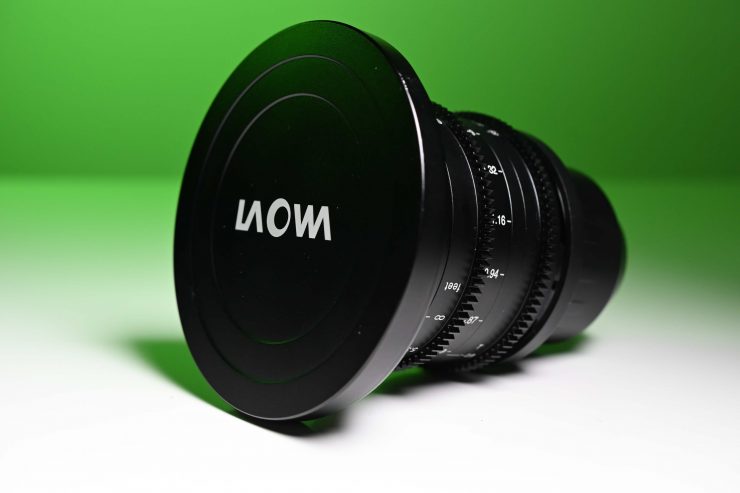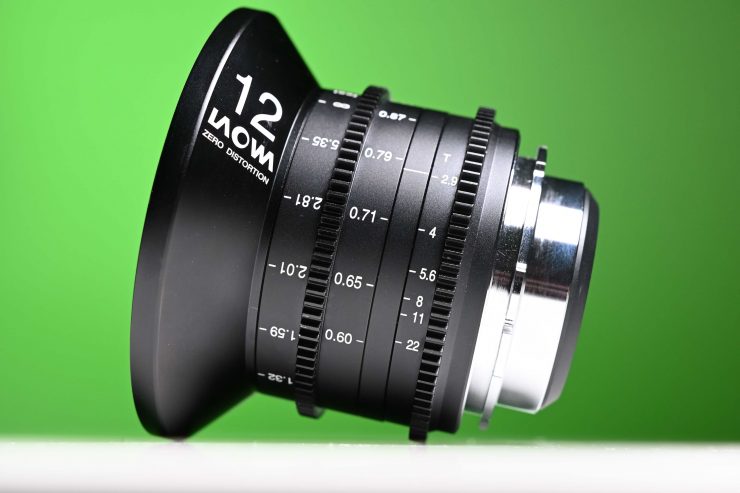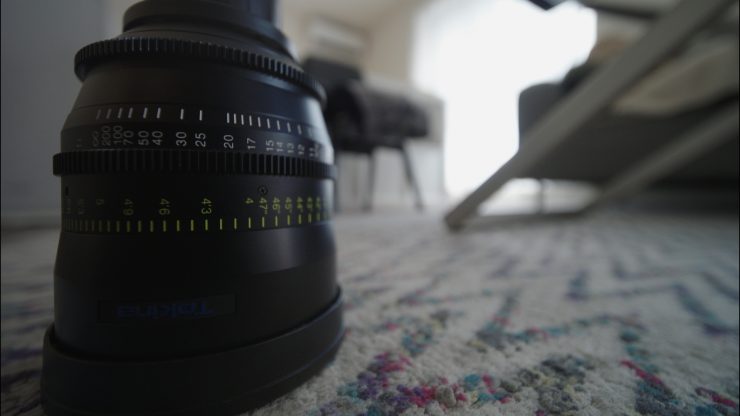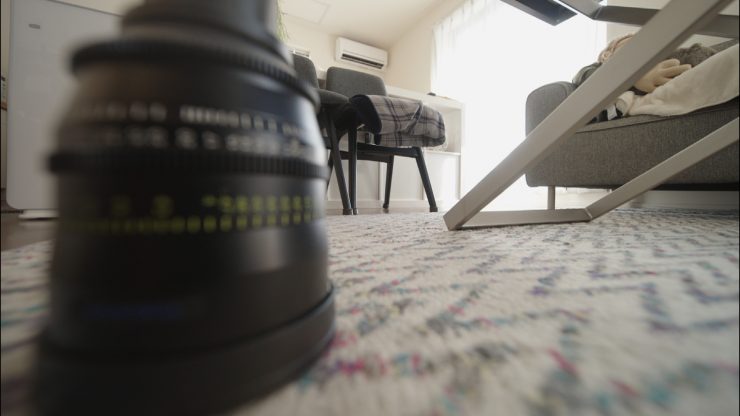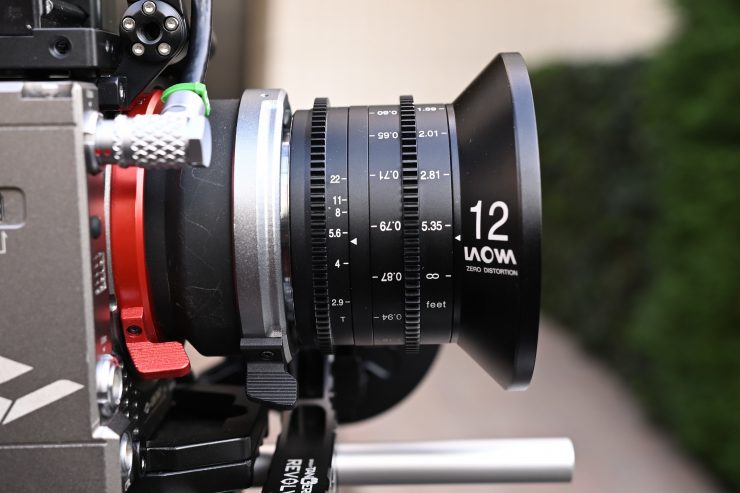
The Laowa 12mm t/2.9 Zero-D Cine lens was announced almost a year ago and it has taken a long time to get to market. I have been lucky enough to get a loan unit from Laowa to put through its paces.
Lens Background
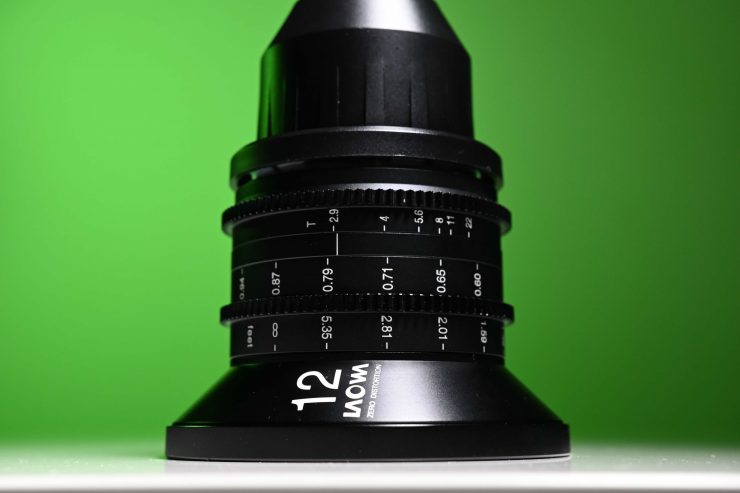
Laowa claims that the new 12mm lens is currently the widest t/2.9 lens that can cover sensors up to Vista Vision size. Technically that is correct if you are talking about lenses with a T2.9 aperture.
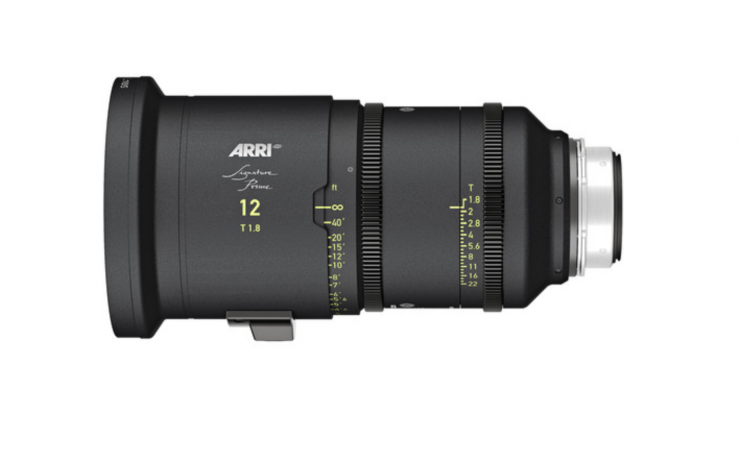
However, ARRI has a 12mm T1.8 Signature Prime, although that is considerably larger, heavier and much more expensive.
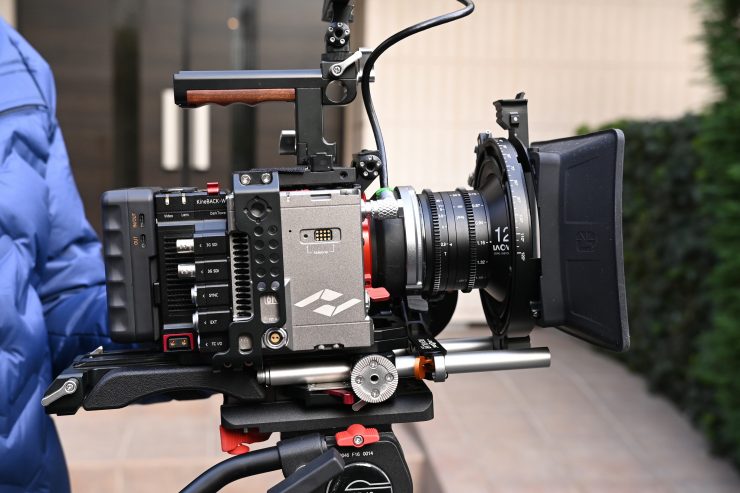
Laowa has a reputation for making unique and unusual lenses, and the 12mm t/2.9 Zero-D Cine Lens follows in those footsteps. I like how Laowa has continued to walk their own path and not just make the same lenses everyone else is making.
Key features
- Full Frame / Vista Vision coverage
- Close to zero distortion
- 122 degrees FoV
- Super Compact
- EF or PL or E mount available
- Step-up to 114mm for matte box installation
Rehoused Stills Lens
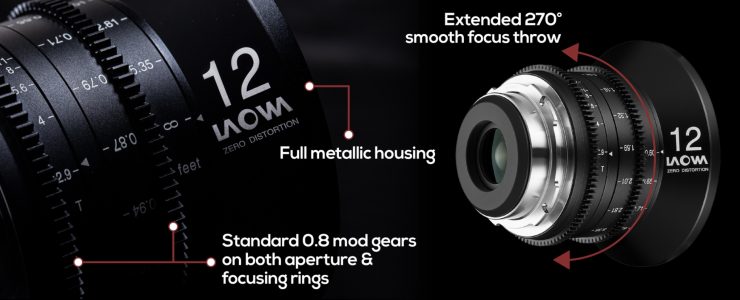
The 12mm t/2.9 Zero-D Cine is based on the same optics used in Laowa’s regular 12mm f/3 Zero-D lens. Essentially, like a lot of affordable cine lenses, it is a re-housed stills lens.
It is very common these days for companies to turn stills lenses into cine lenses by rehousing them. They do this primarily to keep costs down so you don’t have to pay an arm and a leg to buy one.
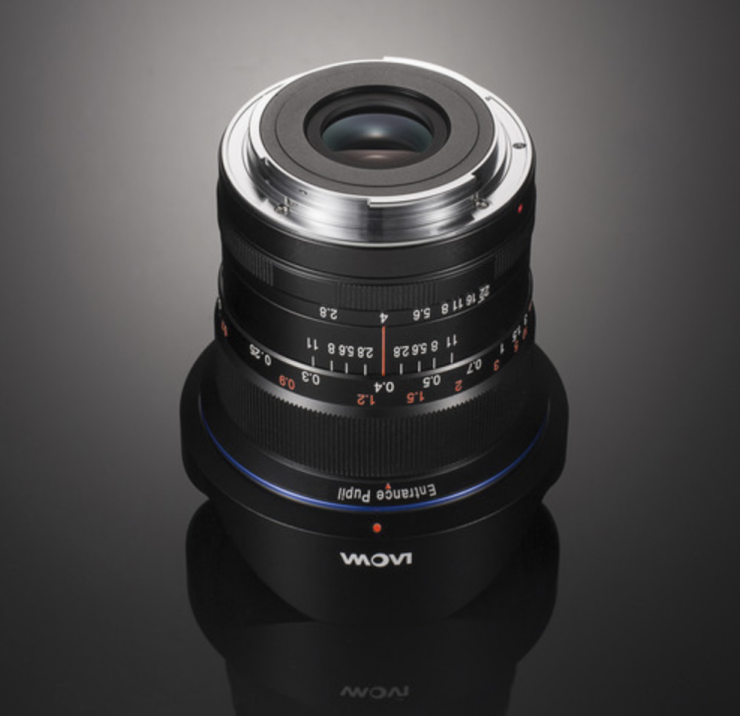
Despite being a re-housing of a stills lens, the cine version is only $500 USD more than the standard lens.
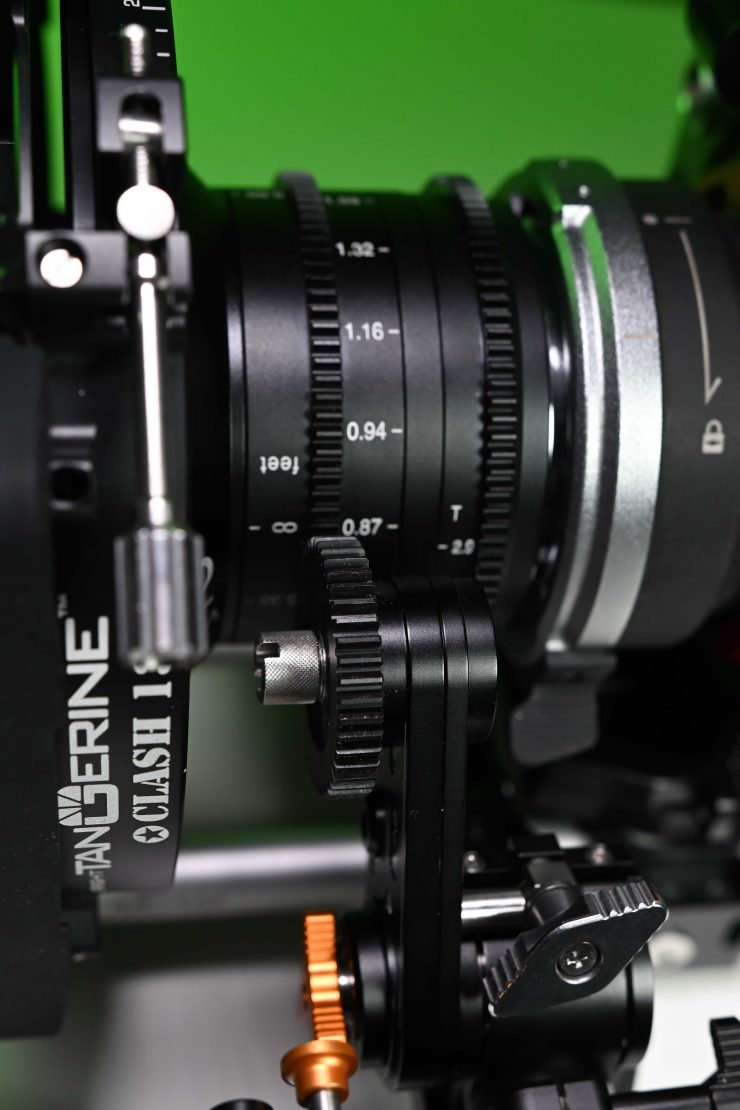
The lens features standard 0.8 mod gears on both aperture and focusing rings, as well as an extended 270° smooth focus throw
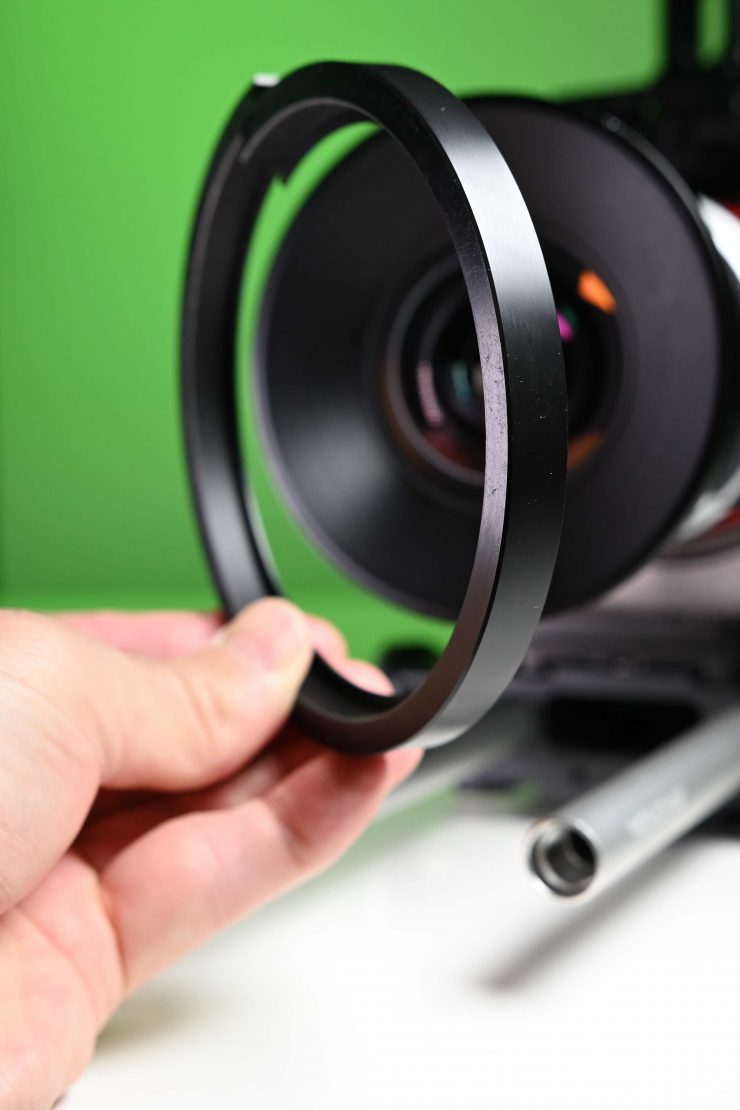

The included adapter ring 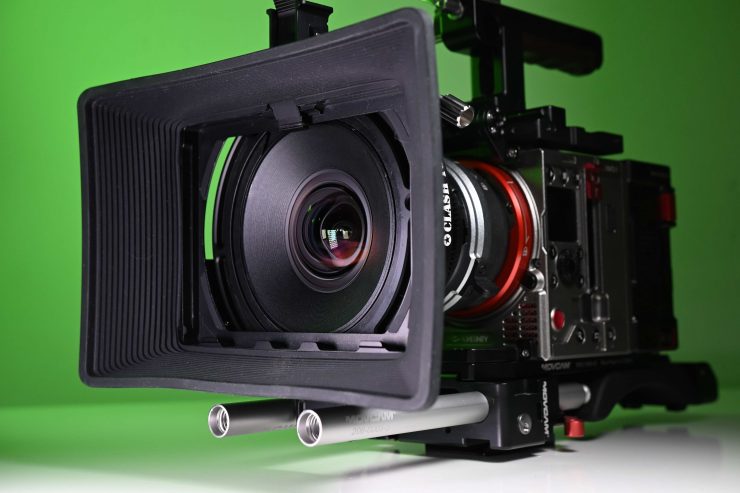
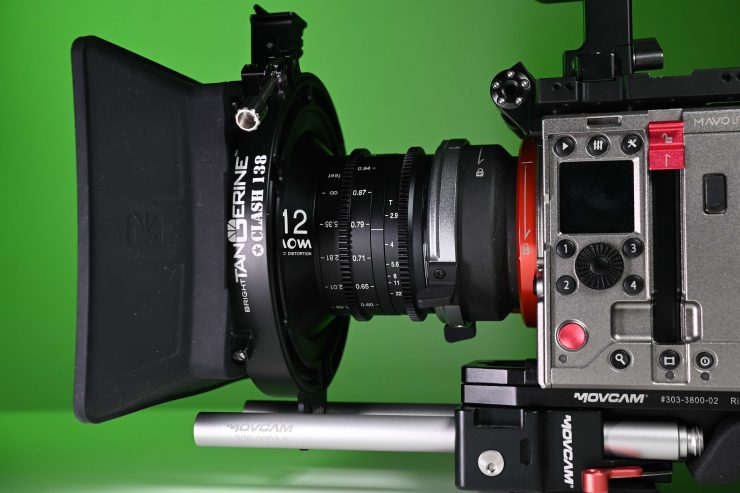
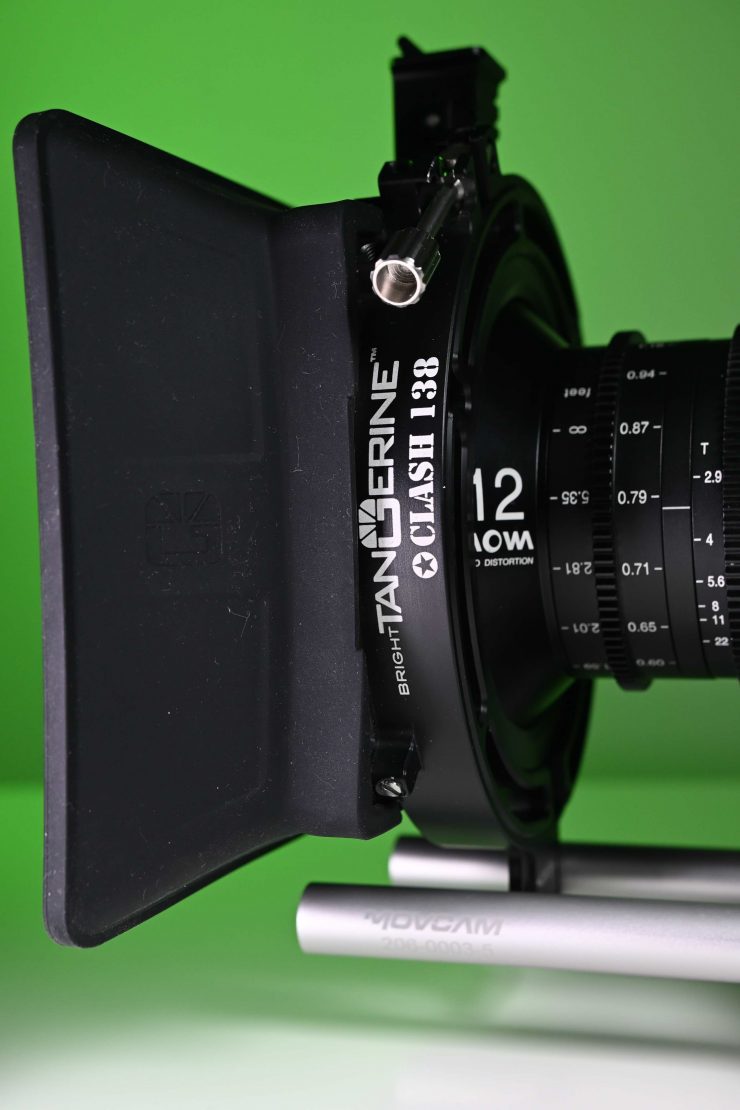
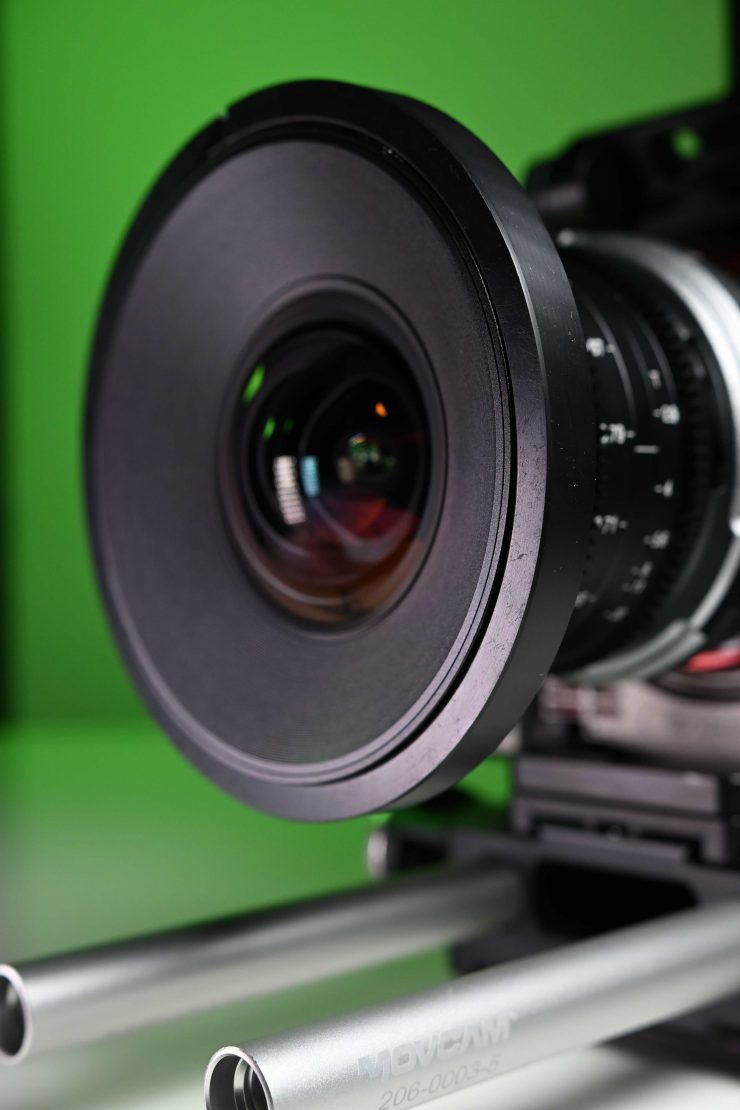
The adapter ring on the lens.
A 114mm step-ring is included in the package to expand the front diameter to fit with industry sized matte box.
What you clearly need to remember is there isn’t a really easy way of attaching any type of filter to the front of this lens, so you will need to use a matte box if you are using it on a camera that doesn’t have built-in ND.
Build Quality
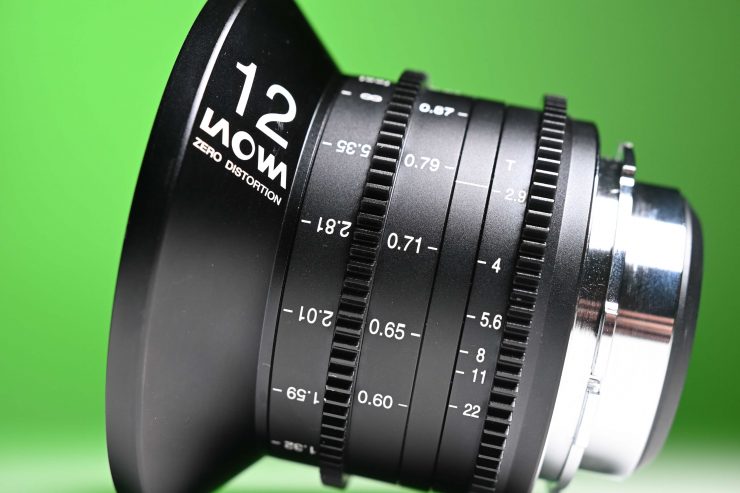
The 12mm t/2.9 Zero-D Cine is fairly well made. The entire enclosure of the lens is made out of aluminum alloy. For a rehoused stills lens, Laowa has done a pretty good when it comes to the build quilty. The housing is reasonably solid, but it doesn’t feel as robust as a lot of other cine lenses I have used. To be perfectly honest, I didn’t expect it to. It’s a sub $1,500 USD cine lens, so there is always going to be some compromises when it comes to lenses like this.
To be perfectly clear, there is nothing wrong with the build quality, but you shouldn’t expect it to feel like a much more expensive cine lens.
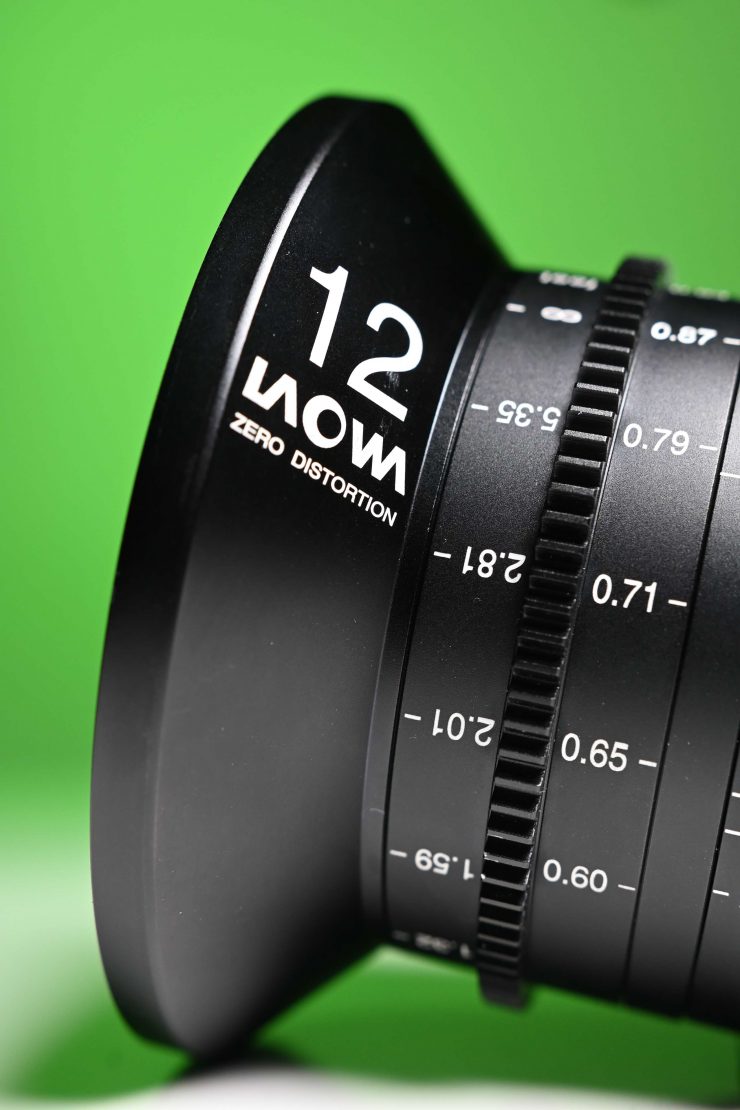
The focus and iris rings are reasonably well-weighted, but I did find an issue with the focus ring. From infinity to around 1.59′ it is fairly smooth, but it seems to stiffen up and there is a noticeable noise as you keep moving the focus ring further around.
Now, this is a lens that has been sent out to a lot of people for reviews, so I have no way of knowing whether this is a design, build quality issue, or something that has happened to the lens prior to me receiving it.
Covers Vista Vision Sensors
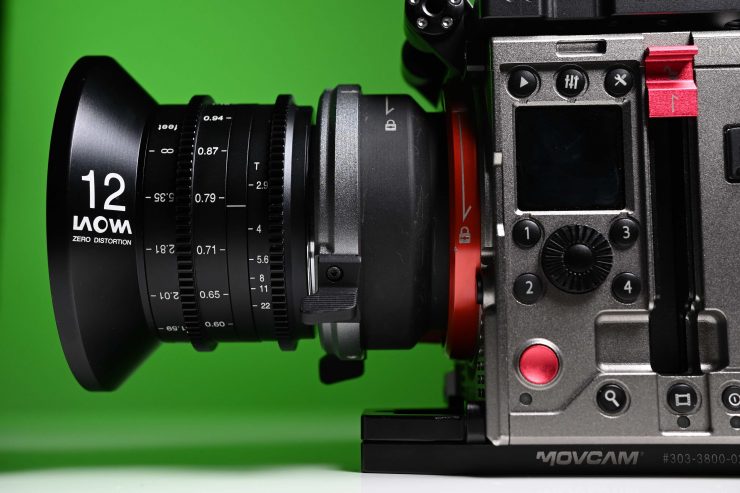
The lens will cover a 44.7mm image circle. This allows cinematographers to not only use the lens on full-frame sensors, but also on Vista Vision sensors such as the RED Monstro and the ARRI Alexa LF (open-gate 44.7mm) fully.
The lens is also ideal for Super35-sized camera owners with the ultra-wide 17mm equivalent field of view. It is certainly a lens that you can use today and in the future if you decide to buy a camera with a larger sensor.
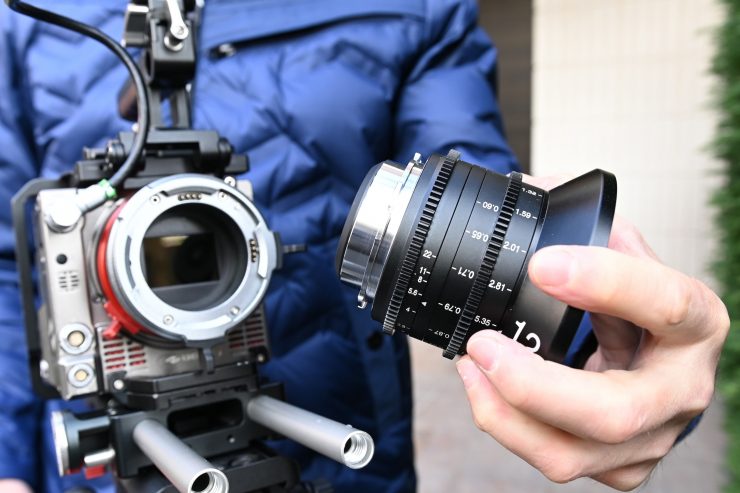
If you are going to buy a lens you really want it to last a long time and be able to use it on a multitude of cameras. What I like about PL mount lenses is that you can adapt them to just about any other mount that is out there.
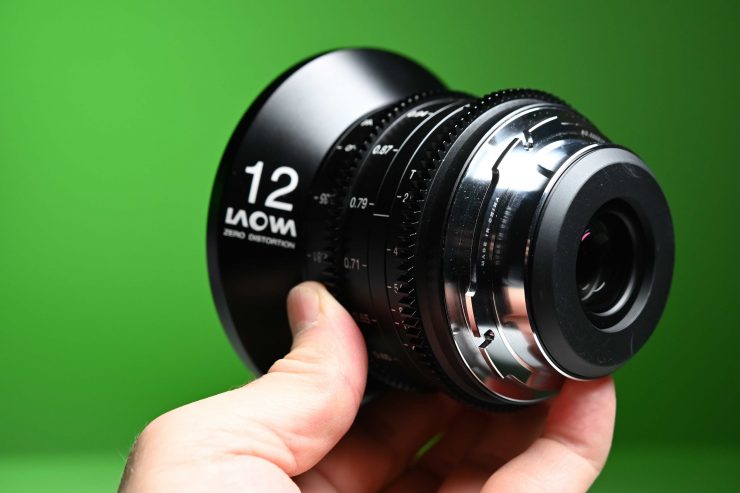
As this is a manual focus lens, for me personally, it makes far more sense to buy this lens in PL mount regardless of what mount your camera is (unless it is Canon EF). It is easy to buy a PL adapter for most camera systems and then you can use this lens on more than just one camera platform.
Weight & Size
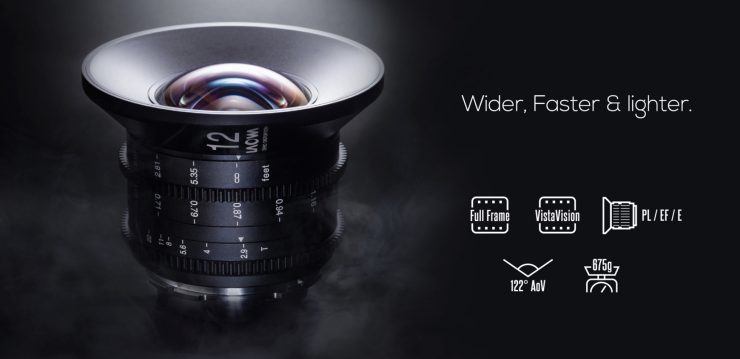
The lens is extremely compact and lightweight for a wide-angle prime that covers such large sensors. It measures in at 3.4” (87mm) long and weighs less than 1.5 lb (675g). This makes it ideal for people wanting to use it on gimbals or drones.
At 1.5 lb (675g), it weighs only slightly more than the stills version of this lens (1.34 lb / 609 g). This is really impressive, usually, cine rehousing add a lot of extra weight.
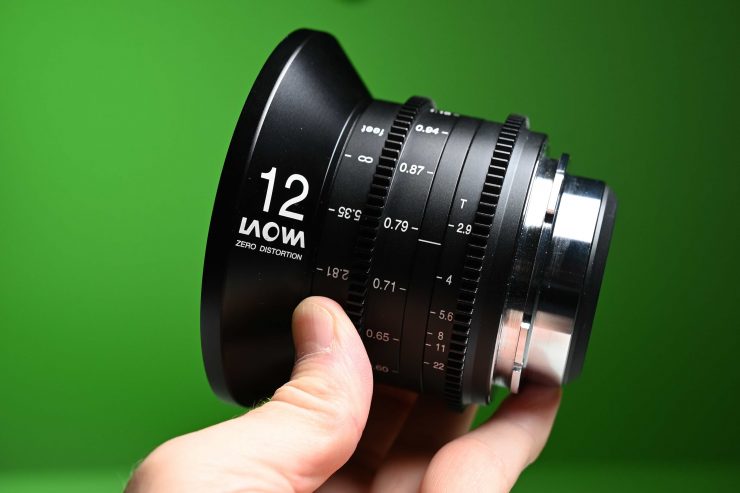
I was actually surprised at just how small the lens is. It really is tiny when you compare it against other wide-angle lenses.
Almost No Distortion
People tend to steer clear of using ultra-wide-angle lenses because of the extreme optical distortion they usually create. A good wide-angle lens should have no more than 2-4% distortion. Laowa claims that they have been able to compress the distortion to a close-to-zero level.
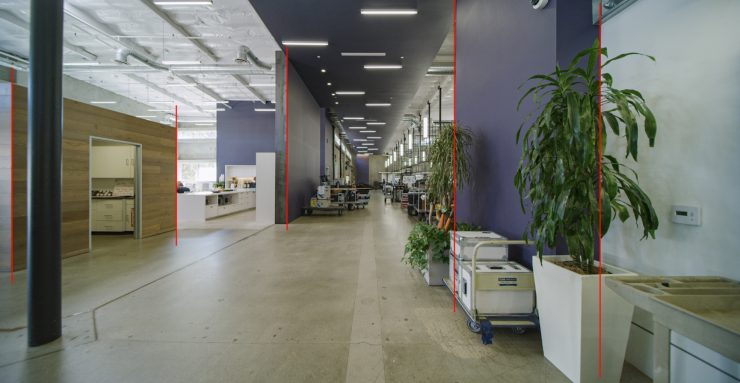
With a good ultra-wide-angle lens, straight lines should remain straight. This doesn’t mean you won’t get what is called ‘perspective distortion’, but straight lines shouldn’t warp.
I was keen to do some tests to see just how little distortion there was. While you are always going to get ‘perspective distortion’ with ultra-wide lenses because of the extreme angle of view, you want to make sure that straight lines remain completely straight. Below in the Real World Performance section, you can see how the lens keeps straight lines straight.
Close Focus
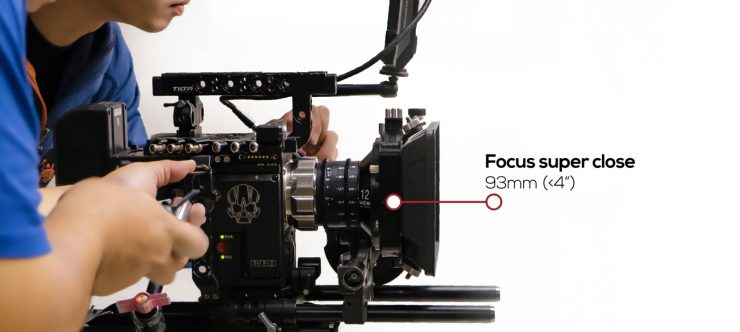
The lens is able to focus anywhere from 7” away from the sensor (<4” from front element) all the way to infinity. Wide-angle lenses usually create a ‘flat’ image with very deep DOF but with this lens, having a close focusing ability and a reasonably fast t-stop, the Laowa 12mm is able to create a unique wide and shallow DOF look.
I love this feature of the lens. It is really nice to use a wide-angle lens that has a really close focus ability. It makes an ultra wide lens far more versatile. Because you can focus so closely, you don’t need a super-fast t stop to create really shallow depth of field.
In saying that, if you are focussing on an object that is too close to the lens you will get pretty bad ‘perspective distortion’. Whether or not this is acceptable to you will depend on what you are shooting. Man-made objects or people tend to look pretty bad, but scenes in nature where it is just long grass etc. will look a lot better.
It’s a specialty lens
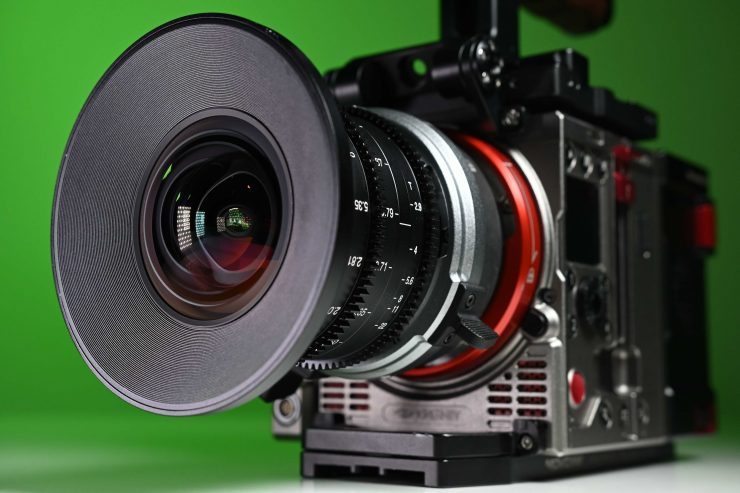
Ultra wide-angle lenses are somewhat of a specialty lens, and they really shouldn’ be overused. They are more for landscapes and large vistas. If you are going to shoot people with them you need to be very careful. You don’t want people too close to the lens or placed out on the edges of frame.
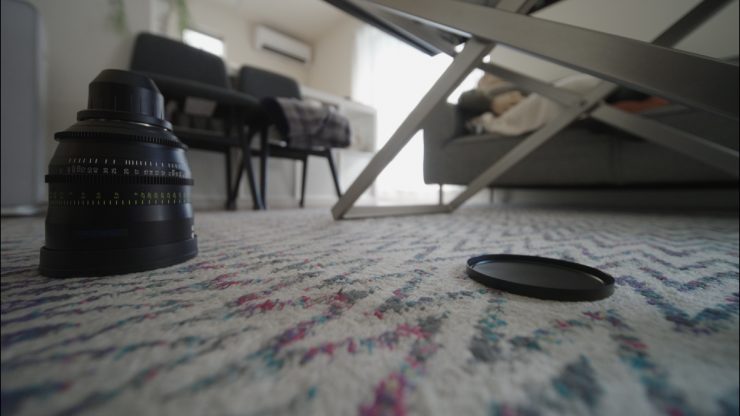
You also don’t want objects placed too close to the lens and in the corner of the frame.
Perspective Distortion can actually be worse than bending lines if you don’t carefully compose and plan your shots. If objects or people are too close to the lens or too far out towards the edges of frame you will get seriously bad ‘perspective distortion’.
If you angle your lens down or up too much, or if you are doing a tilt up or down you need to consider how much ‘perspective distortion’ you will introduce.
If you want the least amount of ‘perspective distortion’ possible then you need to keep the lens perpendicular to your environment.
Sharpness
I set up a small test with the lens shooting full frame 6016 x 3172 on the Kinefinity MAVO LF. This was done to test center sharpness at various T stops. As you would expect, the lens was at its sharpest when used at T5.6-T8.
I was still impressed by just how sharp it still was at T2.9, and T4. In the test, you can see some 300% blow-ups of the image.
Even the edge sharpness was pretty good. While it isn’t nearly as good as the center sharpness, it cleans up quite well by T5.6.
For an ultra-wide-angle lens, the Laowa is nice and sharp.
Usability
Usability is a key component of any product, regardless of what it is. I was keen to see just how easy the lens was to use and if I experienced any operational issues.
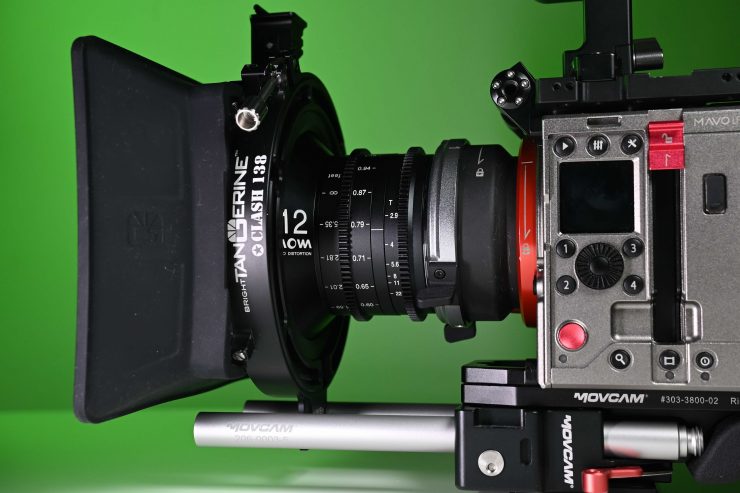
What you need to clearly remember if you plan on using this lens on a mirrorless or DSLR, is that you cannot attach a filter, you need to use it with a matte box. This also goes for using any digital cinema camera that doesn’t have in-built ND filters.
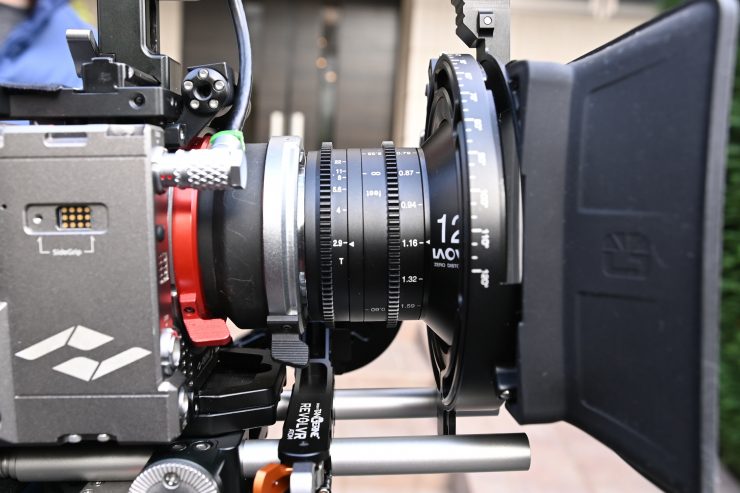
Because the lens is so short you are also going to find that a matte box is going to have to be placed fairly close to your camera body (even more so if you are using a standard PL mount camera without an adapter). This can make operating the lens, especially when it is on your shoulder, very tricky.
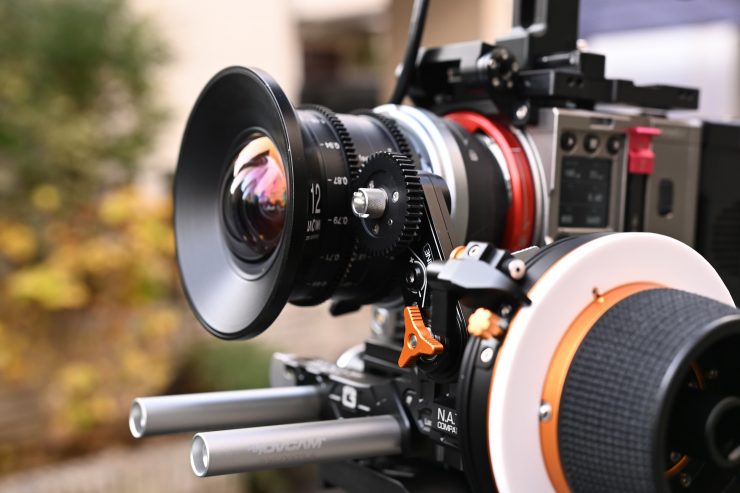
I’m glad to see that Laowa has kept a nice amount of spacing between the lens gears. If you are running focus and iris lens motors it will be a tight squeeze, but it can still be done relatively easily.
Real World Performance
I went out and got a few shots with the lens in my local neighborhood. I was just interested in seeing how much perspective distortion there was, if straight lines stayed straight, how the lens reacted to flare, and what I could and couldn’t use the lens for.
I shot full frame 6K on the Kinefinity MAVO LF. This way I could see how the lens looked on a full frame sensor and how it held up shooting at a higher resolution.
The lens is certainly sharp, and straight lines do stay straight. You do get a ton of perspective distortion, but that is something I expected to see. You just need to be very careful what you shoot with an extreme wide angle lens. While it works for certain shots, with others, you end up getting very unnatural looking footage.
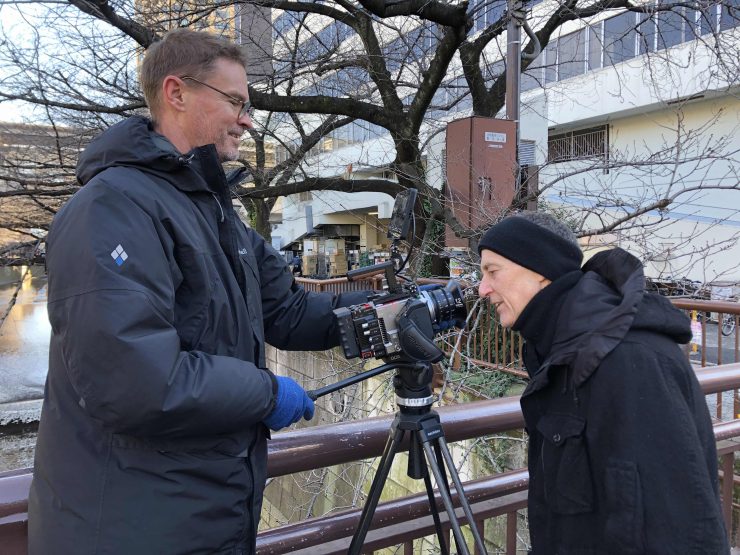
I wouldn’t recommend shooting people with this lens, especially if they are too close to the lens or out towards the edges of frame.
When you do large tilts up or down you do get a very surreal, almost 3D effect where objects almost seem to move closer or further away from the camera. Creatively you can use this effect for certain shooting scenarios.
The lens is quite susceptible to flare and you really need to be aware of this when shooting. The flare the lens does produce is reasonably interesting, but it may not be to everyone’s taste.
As the lens has a very close minimum focus distance if you center frame objects you can create an extremely shallow depth of field when shooting wide open at T2.8. The out of focus areas and the bokeh are a little muddy, but it is more than acceptable.
Having this close focus ability certainly allows you to create some interesting looking shots.
With any extreme wide angle lens, less is more. You wouldn’t want to overuse this lens.
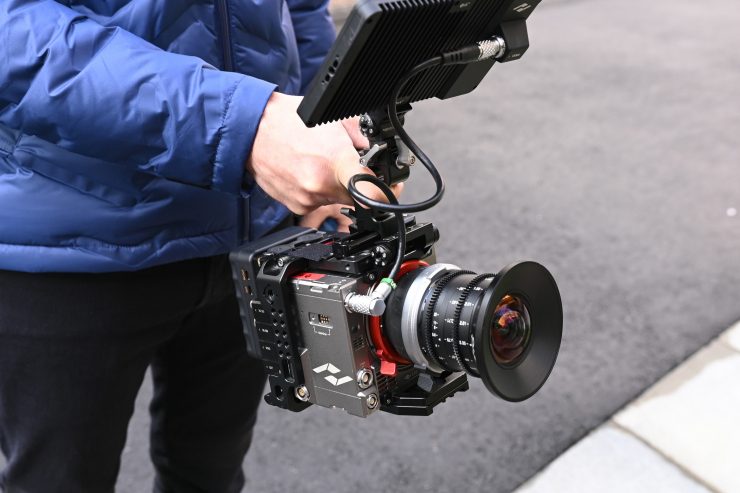
It’s not Laowa’s first PL Mount lens
This is not Laowa’s first PL mount lens. Their 24mm f/14 2X Macro Probe has been available in PL mount for some time.
Laowa is slowly introducing more cine modded versions of their stills lenses. We are still waiting on the OOOM zoom lens that has been shown at trade shows over the last few years to become available.
Other mounts available

The lens is available in PL mount, as well as Canon EF, and Sony E-mount.
Price
The Laowa 12mm t/2.9 Zero-D Cine Lens retails for $1,499 USD. It is the same price in PL, Sony E-mount, and Canon EF mount.
Conclusion
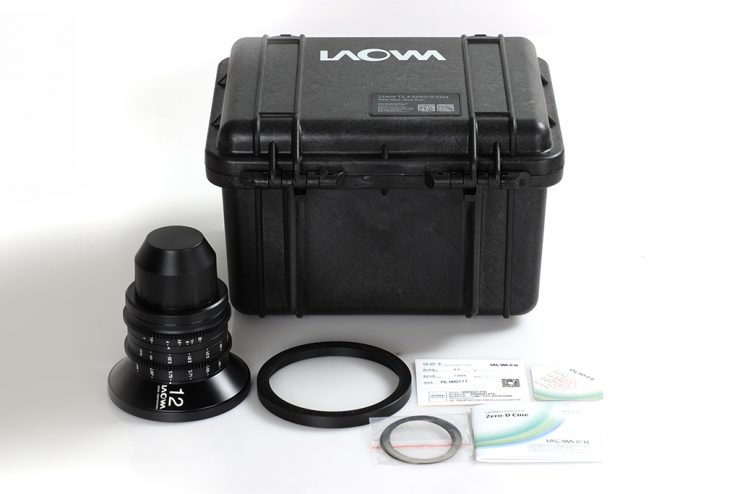
The Laowa 12mm t/2.9 Zero-D Cine is a really good ultra wide angle lens for full frame and larger sensors. At $1,499 USD it is also extremely affordable.
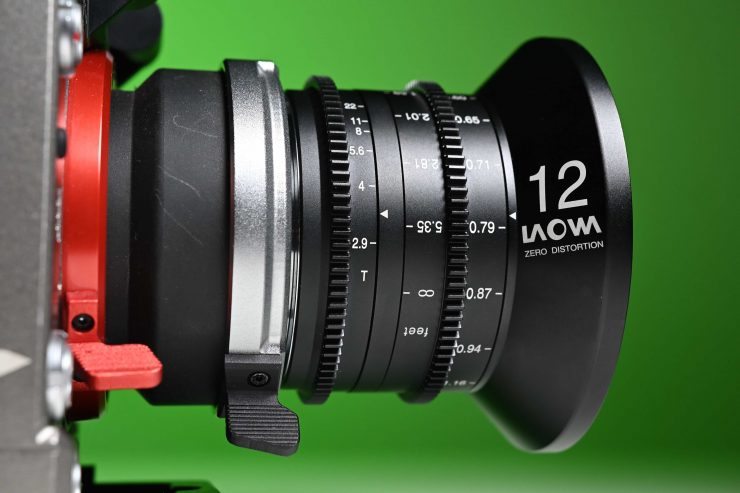
I was very impressed by the usability and optical performance of the lens. It really punches well above its weight and it provides results that you would normally expect from a lot more expensive piece of glass.
While the build quality could be a little better, I’m not going to complain given its low price.
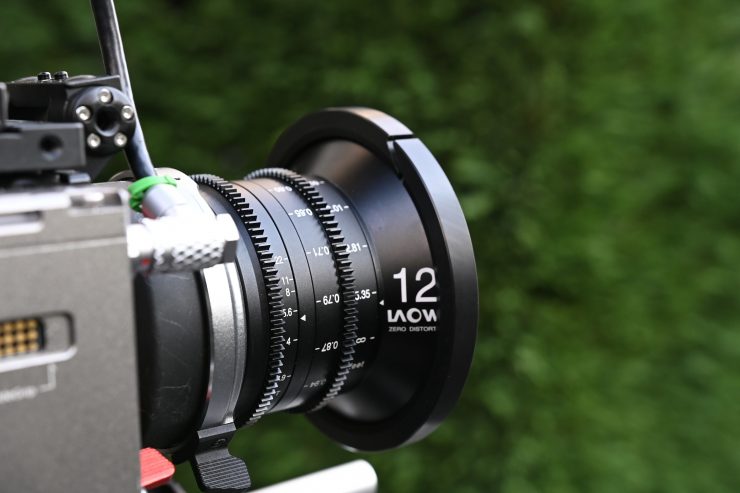
Yes, it is a re-housed stills lens, but that really shouldn’t deter you from purchasing.
Is it perfect, no, but for a sub $1,500 USD cine lens that covers Vista Vision sized sensors I can forgive it for not being perfect.
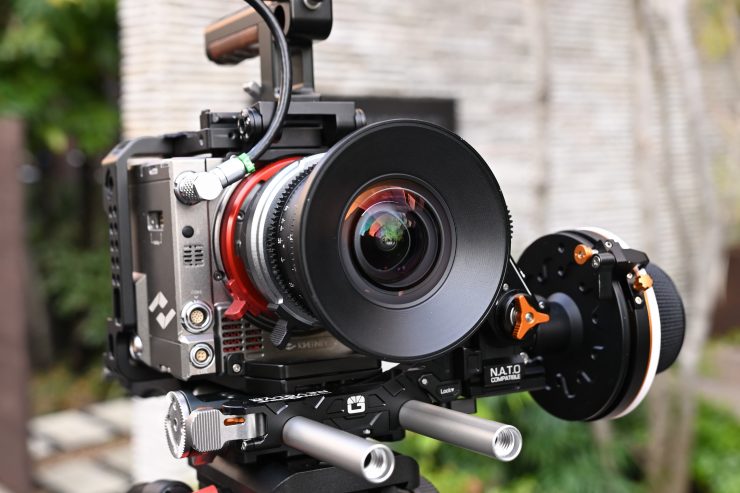
The 12mm t/2.9 Zero-D Cine offers outstanding bang for your buck, and if you are in the market for a proper cine ultra wide angle lens, it is certainly worth taking a long hard look at.

